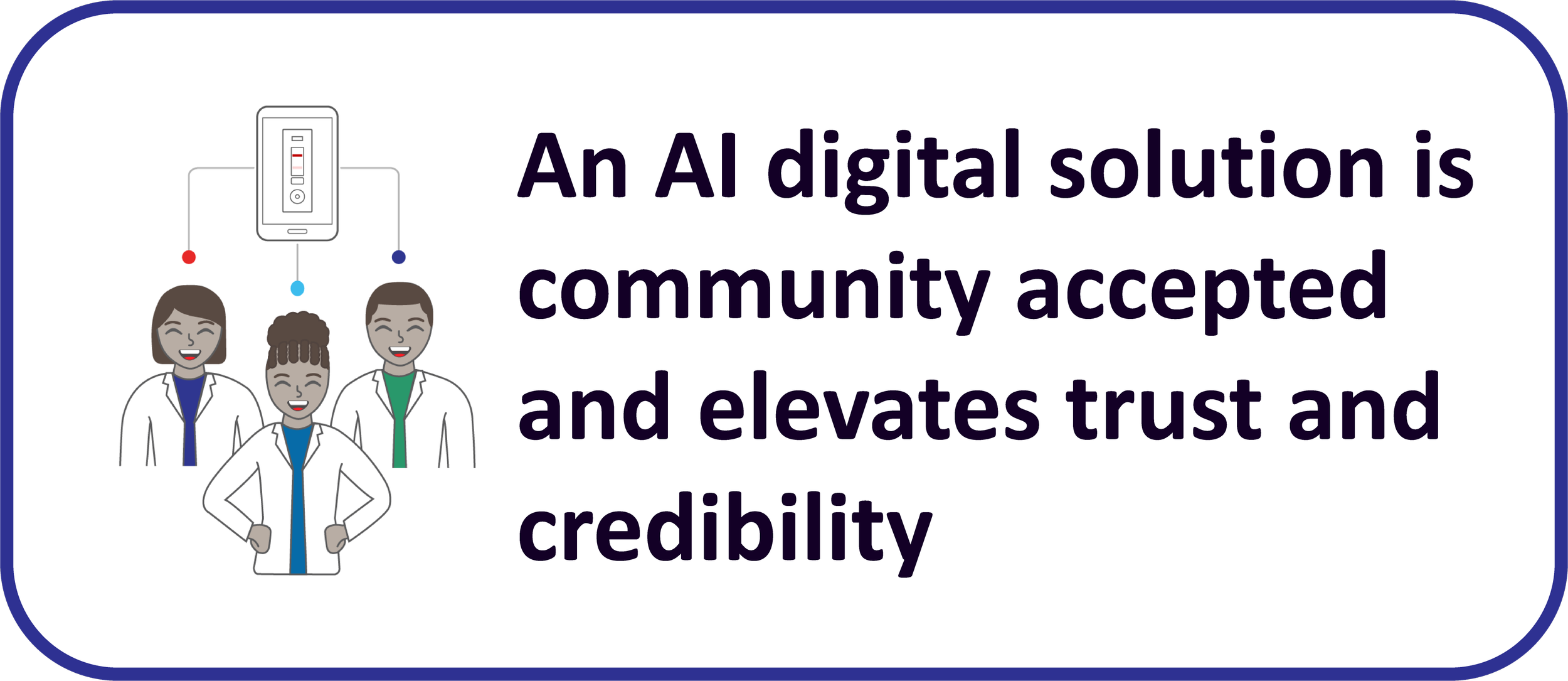Digitally-Enhanced Malaria Testing using AI to Support Quality Control with Health Workers – A Rwandan Pilot Study
Supporting Rwanda’s digitization, monitoring, & quality control goals
Nationwide, between 2021 and 2022, 55% of all uncomplicated malaria cases were managed by community health workers (CHWs). Quality control tools for monitoring and management of CHW malaria rapid diagnostic test (mRDT) administration, interpretation accuracy, and treatment are insufficient and inconsistent across Rwanda. For Rwanda to fully digitize its healthcare system by 2024, the implementation of quality assurance and control workflows to oversee diagnostic services is needed.
This study assessed the impact of having 200 CHWs, linked to 6 facilities in 3 districts, use a mobile app that was augmented by artificial intelligence. The objective was to enhance CHW RDT administration adherence and knowledge, enable real-time data monitoring and surveillance of CHW activities by digitizing mRDT test results, and provide transparency into malaria cases identified and treated, including the accuracy of reporting.
Can an app support CHW quality control monitoring?
Leveraging an existing community-based malaria testing program in Rwanda, an app was customized for CHW use to digitize and collect evidence of mRDT administration and results. The AI-powered app supported CHWs in proper mRDT administration, ensured the expected mRDT was used, captured high quality mRDT result images, and provided an AI result interpretation for supervision purposes. Data collected through the app supported timely in-country surveillance, targeted supportive supervision, and quality assurance/control efforts.
Key monitoring, quality control, and CHW benefits observed
The App was feasible, accepted, and desired by CHWs. CHWs reported increased self-confidence and community trust in their activities.
99% agreed app instructions were clear and easy to follow
93.8% agreed time was saved compared to using paper registers
93% found the app very user-friendly
App use significantly improved CHW’s mRDT knowledge, administration adherence, and interpretation accuracy. Identification of positive results improved by 72% (from 13% to 85.2%) for very faint visible lines and RDT read window knowledge improved by 17% (79.9% to 97%).
AI achieved 95.5% accuracy in interpreting mRDTs for malaria diagnosis, outperforming CHWs’ 94% accuracy.
AI detected 25.4% more Pan lines than CHWs. AI is potentially valuable for identifying new malaria strains and essential for multiplex tests like Flu/COVID, where precise RDT line presence matters.
AI is a valuable tool for identifying CHWs who need support. 9% of CHWs in the study had an mRDT interpretation accuracy rate below 85%, indicating they could likely benefit from additional guidance in their daily testing.
Conclusion
HealthPulse AI solutions were designed for use in communities and field tested with CHWs in Rwanda, Kenya, and Nigeria, demonstrating app feasibility, usability and acceptance. This study demonstrates the applicability of this solution for use as a training, job aid, and targeted supportive supervision tool. The solution is ready for scale and can be easily customized and integrated into any existing health system to support ongoing digitization efforts for nationwide monitoring of disease spread, or leveraged at targeted locations as a sentinel surveillance tool to ensure accurate and quality community diagnostic testing.










